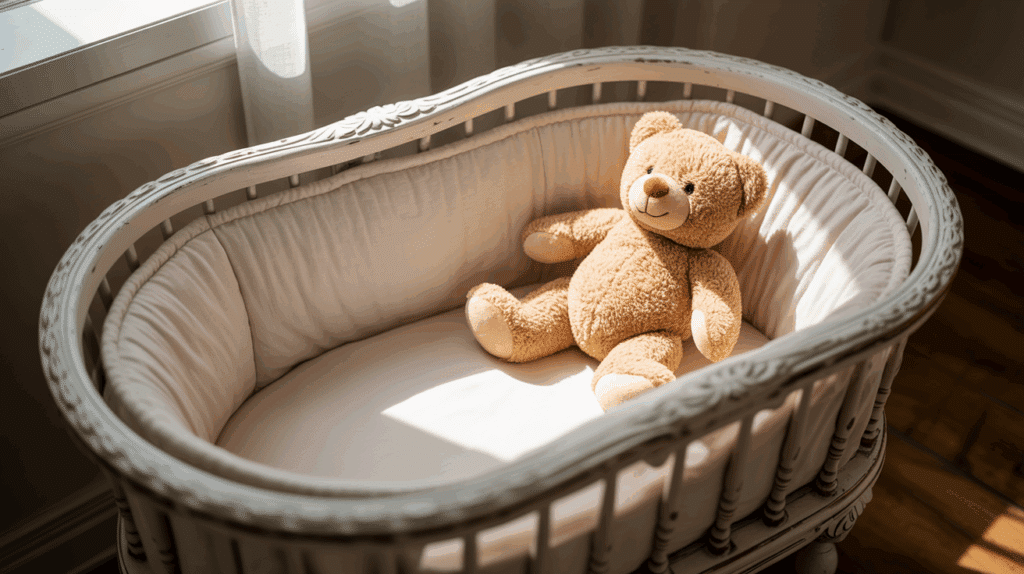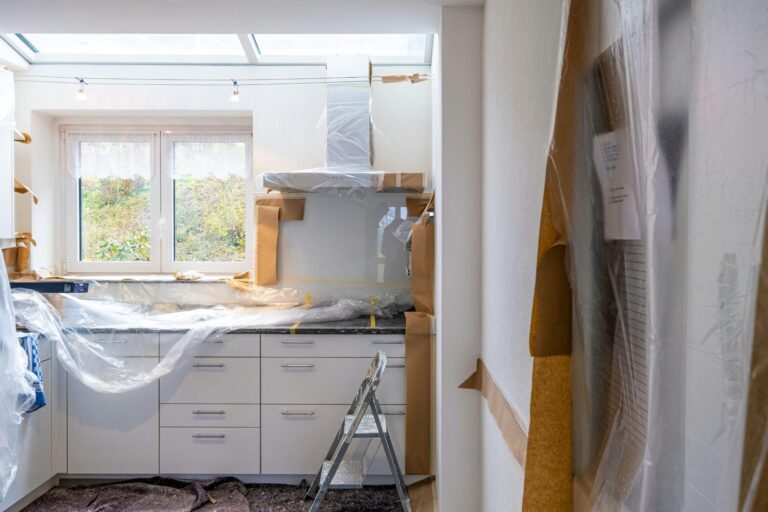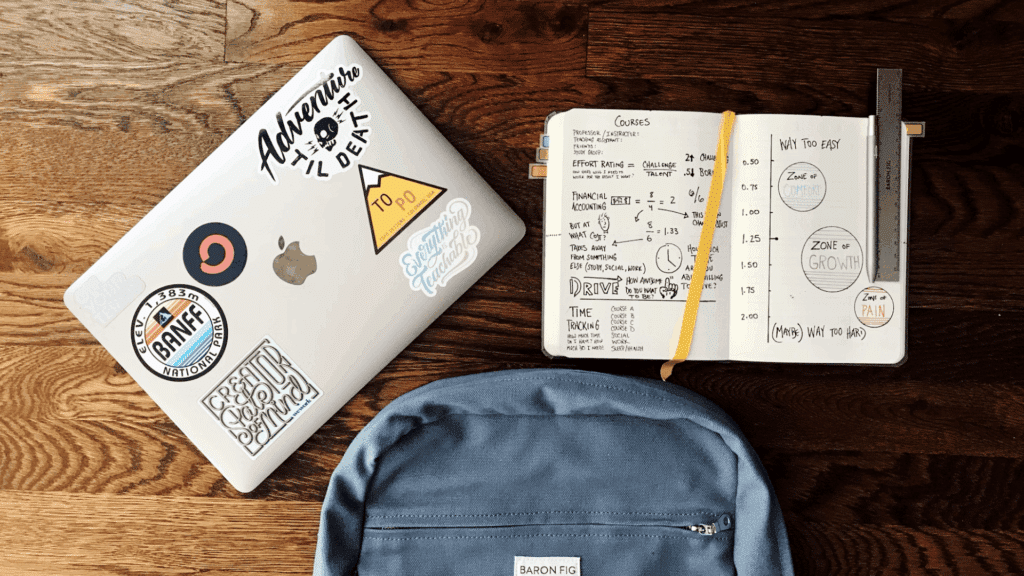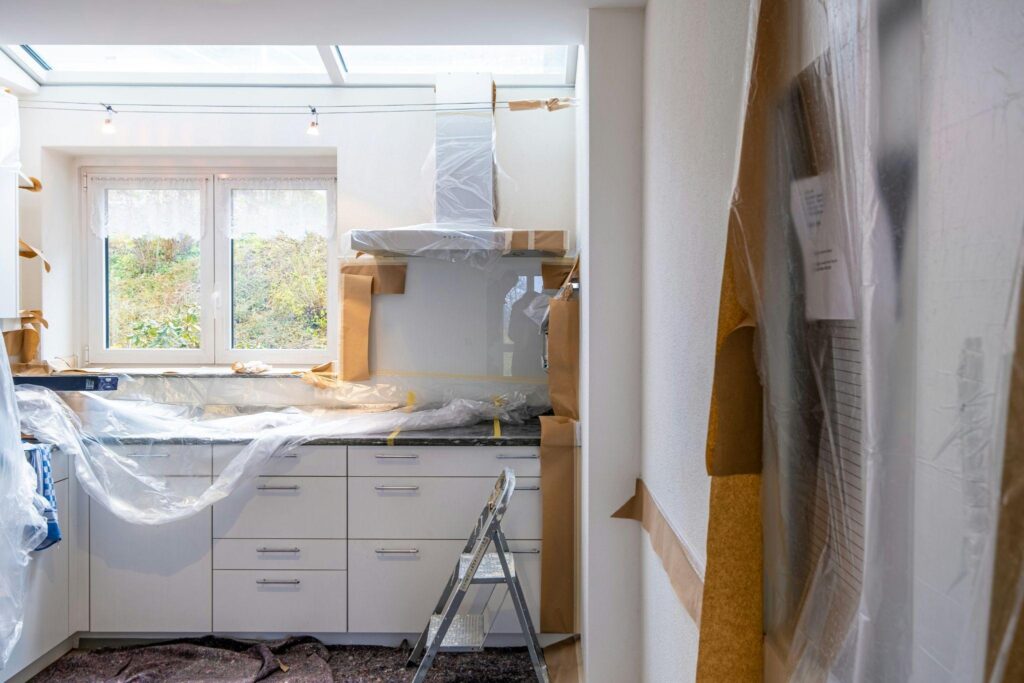New parents often worry about when to transition their baby from a bassinet to a crib.
Most babies can safely sleep in a bassinet for the first 3-4 months of life. However, the exact timing depends on the baby’s size, weight, and mobility rather than age alone.
This blog will answer your question, how long can a baby be in a bassinet, and help parents understand the key signs that indicate when their little one has outgrown their bassinet.
What is a Bassinet?
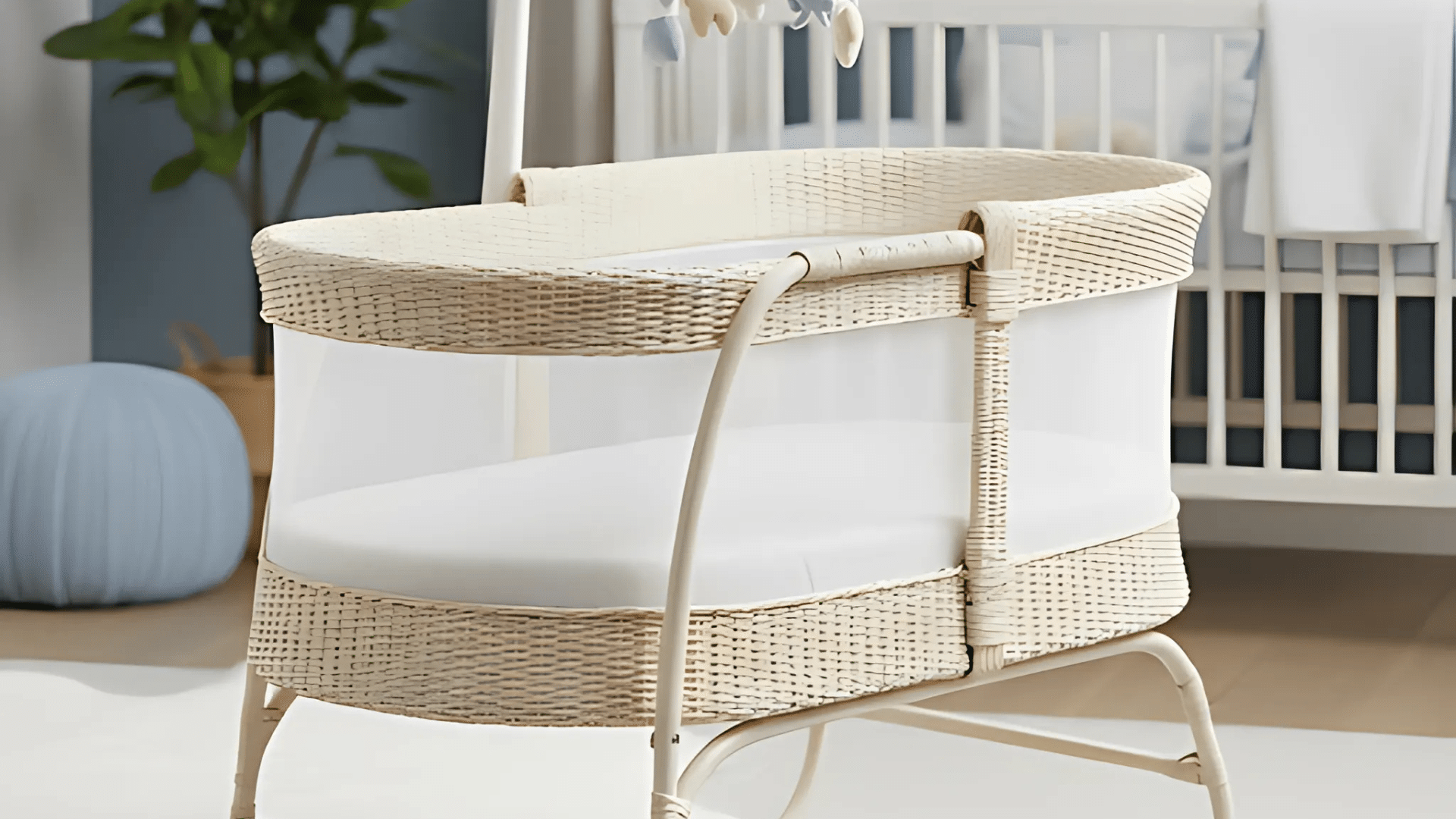
A bassinet is a small, portable bed designed specifically for newborns and young infants, typically used from birth until about four to six months of age.
It features high sides for safety, a compact design for easy placement near a parent’s bed, and is often lightweight for convenient movement between rooms.
Most parents find that bassinets work well for the first few months before a move to a more spacious crib becomes needed.
If you are still unsure about a bassinet being the right choice for you, check out our blog, Do I Need a Bassinet? A First-Time Parent’s Dilemma.
The Benefits of a Bassinet
Welcoming a newborn is a joyful yet challenging time, and choosing the right sleeping arrangement is one of the first big decisions for new parents.
A bassinet stands out as a popular choice, offering a blend of safety, convenience, and comfort for both baby and parents.
The benefits of bassinets are as follows:
- Increased Safety:Bassinets provide a snug, secure sleeping environment designed specifically for newborns. Many models feature high, breathable sides and comply with strict safety standards, reducing the risk of Sudden Infant Death Syndrome (SIDS) and suffocation.
- Convenient Nighttime Care:Bassinets are compact and can be placed right next to the parents’ bed, making it easier to attend to nighttime feedings, diaper changes, or simply check on your baby without leaving your bed. This proximity fosters bonding and helps parents respond quickly to their newborn’s needs.
- Portability and Flexibility:Lightweight and often equipped with wheels or handles, bassinets are easy to move from room to room. This portability allows parents to keep their baby close during naps throughout the day, ensuring constant supervision and comfort
- Comfort and Familiarity:The cozy, enclosed design of a bassinet mimics the womb, helping newborns feel safe and soothed. This can make the transition to independent sleep smoother and less stressful for both the baby and the parents
- Ease of Transition:As babies grow, the familiarity of the bassinet can make the eventual move to a crib easier, providing a gradual transition to a larger sleep space.
- Peace of Mind for Parents: Knowing your baby is safe, comfortable, and within arm’s reach provides invaluable peace of mind during those precious early months.
How Long Can a Baby Be in a Bassinet for Safe Sleep?
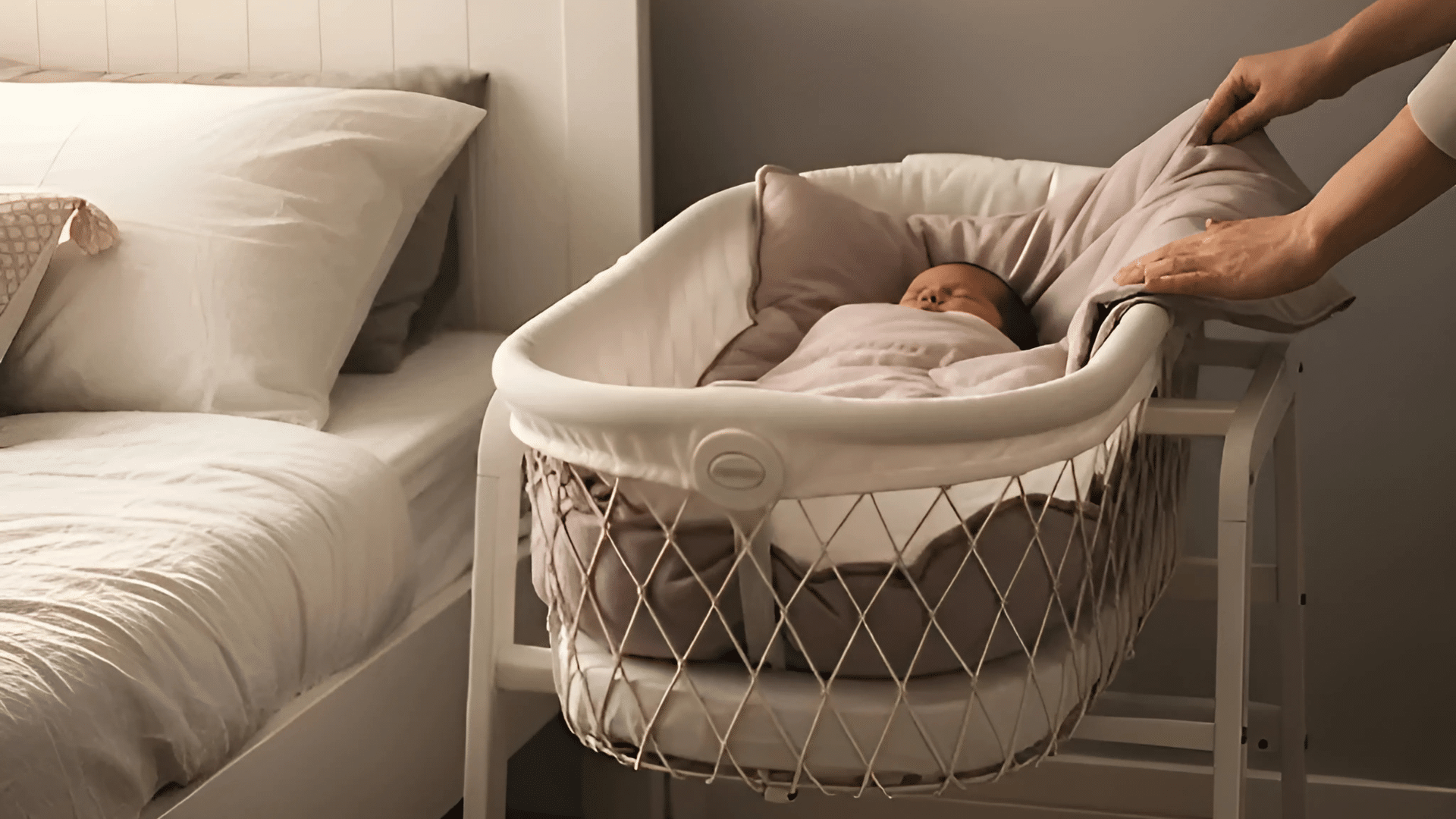
Parents need to know when to transition their little one to a larger sleeping space. The question of how long a baby can be in a bassinet has a few different answers based on safety factors and the child’s development.
Transition your baby from bassinet to crib between 3-6 months or when they reach 15-20 lbs, start rolling, appear cramped, or sleep poorly.
1. Watch Your Baby’s Weight
Baby bassinets aren’t built for bigger babies. Most can only hold between 15 to 20 pounds safely.
Think of it like a weight limit on a small boat, too heavy and it becomes unsafe. Check your bassinet’s manual for the exact limit. Once your baby reaches this weight, it’s time to move them, even if they seem content in the smaller space.
2. Notice Those Moving Skills
Babies learn new tricks fast! When your little one starts rolling over or pushing up on hands and knees, they need more room to move safely. These skills usually show up between 4 and 6 months.
A bassinet becomes too small and potentially dangerous once your baby can roll or push up, as they might tip it over or get trapped against the sides.
3. Measure Their Growing Height
Your baby’s height matters too. If their head comes close to the top edge of the bassinet walls, they’ve outgrown it. For safety, the walls should be at least 4 inches taller than your baby when they’re lying down.
This prevents them from accidentally rolling out as they grow and move more during sleep.
4. Consider Their Age Range
Most babies move to cribs between 3 and 6 months old. This timeline gives you a helpful planning window. Even if your baby hasn’t hit other milestones yet, starting to prepare for the crib transition around the 3-month mark is smart.
By 6 months, nearly all babies need the larger sleeping space a crib provides.
5. Pay Attention to Sleep Quality
Your baby will tell you when they need more space through their sleep quality. If they suddenly start waking more often, seem uncomfortable, or look cramped with limbs pressed against the sides, their bassinet may be too small.
Better sleep in a bigger space is nature’s way of saying it’s time for a change.
Difference Between a Bassinet and a Crib
| Feature | Bassinet | Crib |
|---|---|---|
| Size | Compact and takes up less space in a bedroom; typically 15-18 inches wide and 30-33 inches long | Much larger, requiring more room; standard cribs measure about 28 inches wide and 52 inches long |
| Portability | Lightweight and often comes with wheels for easy movement between rooms | Heavy, sturdy, and generally stays in one place once assembled |
| Age Range | Used for newborns until 3-6 months old or when the weight limit is reached | Can be used from birth until 2-3 years old (or when the child can climb out) |
| Design | Shallow with low sides that make it easy for parents to reach the baby without bending | Features high rails for safety once the baby becomes mobile and can stand up |
| Cost | Generally less expensive, ranging from $50-$200 for most models | More substantial investment, typically ranging from $150-$800, depending on features |
Safety Tips for Bassinet Use
A safe sleep environment is essential for your baby’s well-being, especially during the early months when they are most vulnerable. Using a bassinet correctly can help reduce the risk of sudden infant death syndrome (SIDS) and prevent injuries.
After answering your question, How long can a baby be in a bassinet, let’s take a look at the safety tips for bassinet use.
- Ensure the bassinet meets current safety standards and has breathable mesh sides for airflow and visibility.
- Use only a firm, flat mattress that fits snugly in the bassinet; avoid soft or thick mattresses
- Keep the bassinet free of pillows, blankets, toys, and bumpers to minimize suffocation risk
- Always place your baby on their back to sleep
- Regularly check that screws and bolts are tight to prevent accidental collapse
- Position the bassinet away from cords, curtains, heaters, and electrical appliances to avoid strangulation or burns
- Follow the manufacturer’s weight and age guidelines, and transition your baby to a crib once they can roll over, push up, or exceed the recommended limits
- Never use a bassinet with missing or broken parts, and avoid second-hand products that may not meet current safety standards
Summing It Up
Making the move from bassinet to crib doesn’t have to feel overwhelming for parents.
The key is watching for clear signs like weight limits, mobility changes, and space constraints rather than rushing based on age alone.
We hope this blog has answered your question, How long can a baby be in a bassinet. Start by setting up the crib in the same room and gradually introducing your baby to their new sleep environment.


